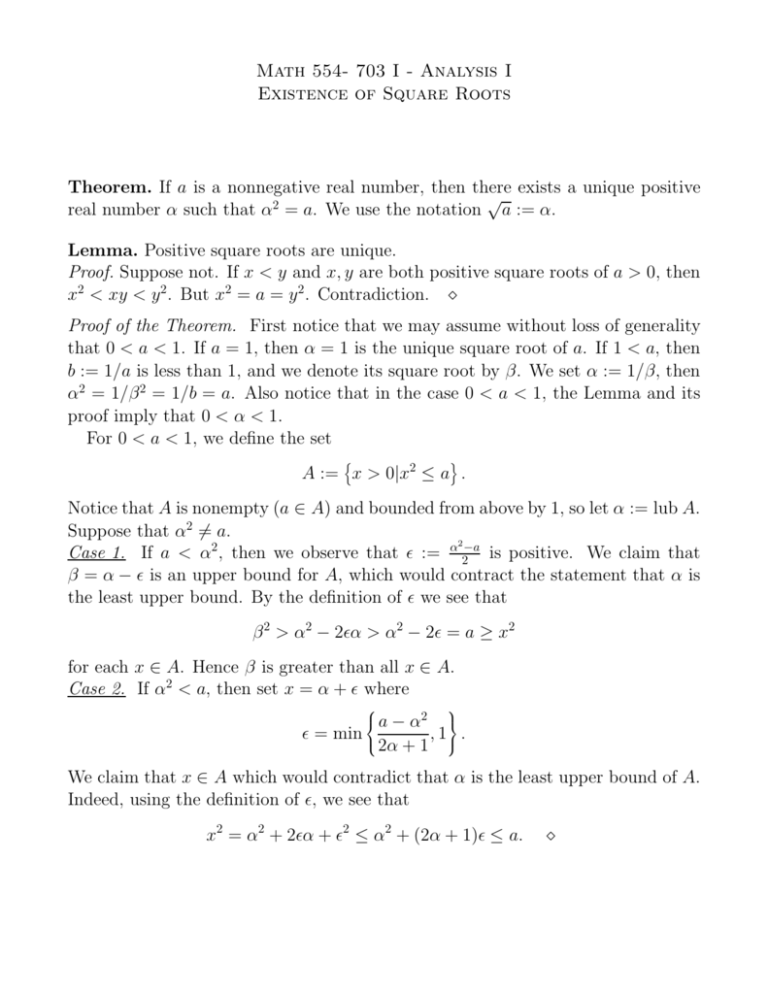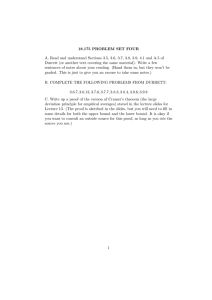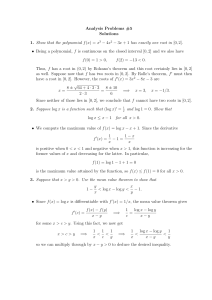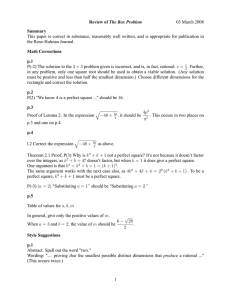Math 554- 703 I - Analysis I Existence of Square Roots Theorem. If a
advertisement

Math 554- 703 I - Analysis I Existence of Square Roots Theorem. If a is a nonnegative real number, then there exists a unique positive √ real number α such that α2 = a. We use the notation a := α. Lemma. Positive square roots are unique. Proof. Suppose not. If x < y and x, y are both positive square roots of a > 0, then x2 < xy < y 2 . But x2 = a = y 2 . Contradiction. ⋄ Proof of the Theorem. First notice that we may assume without loss of generality that 0 < a < 1. If a = 1, then α = 1 is the unique square root of a. If 1 < a, then b := 1/a is less than 1, and we denote its square root by β. We set α := 1/β, then α2 = 1/β 2 = 1/b = a. Also notice that in the case 0 < a < 1, the Lemma and its proof imply that 0 < α < 1. For 0 < a < 1, we define the set n o A := x > 0|x2 ≤ a . Notice that A is nonempty (a ∈ A) and bounded from above by 1, so let α := lub A. Suppose that α2 6= a. 2 Case 1. If a < α2 , then we observe that ǫ := α 2−a is positive. We claim that β = α − ǫ is an upper bound for A, which would contract the statement that α is the least upper bound. By the definition of ǫ we see that β 2 > α2 − 2ǫα > α2 − 2ǫ = a ≥ x2 for each x ∈ A. Hence β is greater than all x ∈ A. Case 2. If α2 < a, then set x = α + ǫ where a − α2 ǫ = min ,1 . 2α + 1 We claim that x ∈ A which would contradict that α is the least upper bound of A. Indeed, using the definition of ǫ, we see that x2 = α2 + 2ǫα + ǫ2 ≤ α2 + (2α + 1)ǫ ≤ a. ⋄











